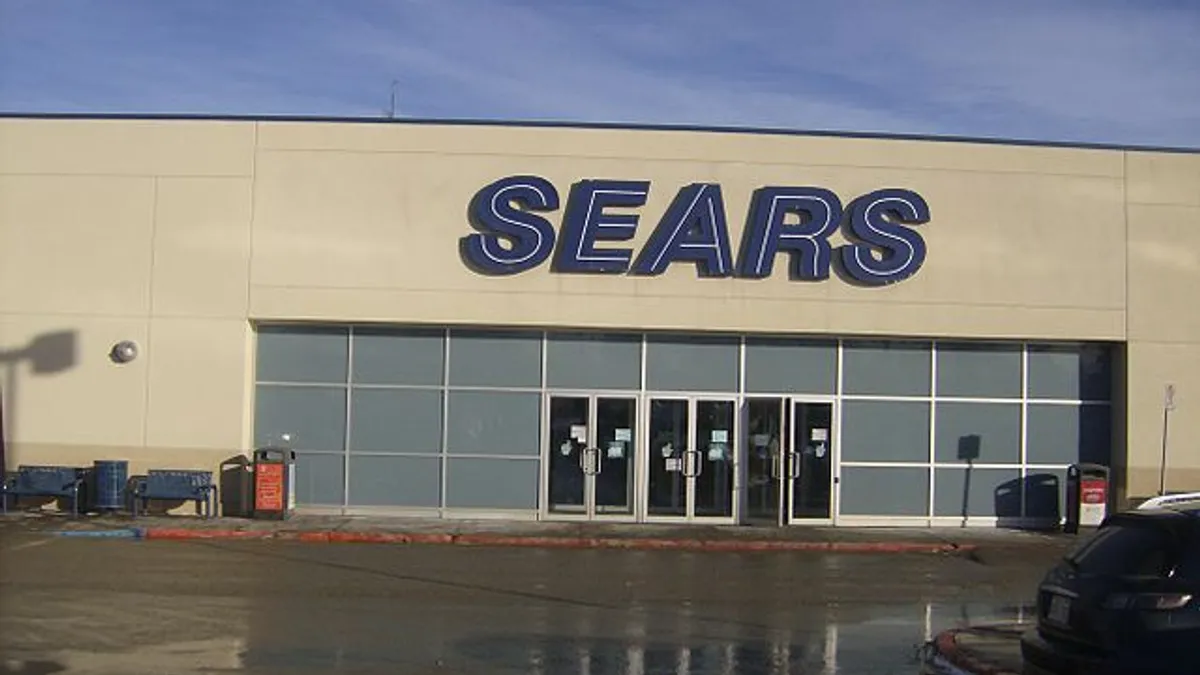Dive Brief:
- Retail debt defaults hit an all-time high in the first quarter of 2018, with nine companies either filing for bankruptcy or executing distressed debt exchanges, Moody's analysts said in a Tuesday report emailed to Retail Dive. Retail defaults in February and March, at four apiece, were at the highest single-month levels since 1998, according to Moody's.
- Defaults in March included Sears Holdings, which pushed out looming maturities and reduced its interest payments through a debt exchange, as well as Claire's Stores, which filed for bankruptcy. Sears' debt exchange left it with a $134 million maturity due in October this year, according to S&P Global.
- Moody's analysts, led by Sharon Ou, said that this year's defaults are already in range of last year's totals, which saw record retail bankruptcies. For the year, Moody's projects that the industry will have the second-highest default rate, below the media and publishing industry. Earlier this year, Moody's analysts predicted retail defaults would peak in March.
Dive Insight:
Bleeding in mall retail did not stop with the new year and robust holiday sales season.
In a November survey, nearly all retail executives said they expect as many or more bankruptcies in 2018 as occurred last year, according to a March study from accounting and consulting firm BDO. Specifically, 40% of executives said they expect more bankruptcies and another 54% said they expect the level of bankruptcy filings to stay consistent with last year, which surpassed 2008 in retail bankruptcies.
Already this year, six major retailers have filed for bankruptcy, including department store retailer Bon-Ton and Nine West, which filed last week with plans to sell off its flagship brand. (Nine West was not included in Moody's default tally, having come after the first quarter ended.)
In its report, BDO counted more than 2,300 stores slated for closure in the second half of 2017, including retailers that planned to close at least 20 stores in the period. The firm also cited Cushman & Wakefield projections that 12,000 retail stores could close in 2018, up from 9,000 last year, and that at least 25 major retailers would file for bankruptcy this year.
S&P also cautioned this year that retail defaults "could match or exceed" those in 2017. S&P analysts led by Robert Schulz pointed to several danger points, including approaching debt maturities ($5.6 billion in 2018, $13 billion in 2019 and $18 billion in 2020), shifting consumer spending, the "dangerous lag" of some retailers behind their competitors, a surplus of stores and highly leveraged balance sheets due to "dozens of private equity buyouts over the past decade."
S&P analysts also warned that business liquidations in retail could pick up this year, with Bon-Ton (which filed for bankruptcy in February) being potentially "the first department store to liquidate in a number of years." Toys R Us is currently winding down its domestic business after a terrible holiday performance put it in default on a bankruptcy loan.
That most retail executives (94%) expect bankruptcies to keep pace with 2017, or even surpass it, is an ominous sign. As David Berliner, leader of BDO's restructuring and turnaround practice noted to Retail Dive in a March interview, executives keep a careful watch not only over their own businesses, but those of their competitors, too — and not necessarily out of compassionate concern for their peers. "A stronger retailer is willing to lower prices to a loss if it will hurt their competitor," Berliner said.
Whether or not Chapter 11 survivors go on to succeed depends largely on whether they truly just had a balance sheet problem, or if they had other operating issues that did not get mentioned and addressed in court, according to Berliner.














